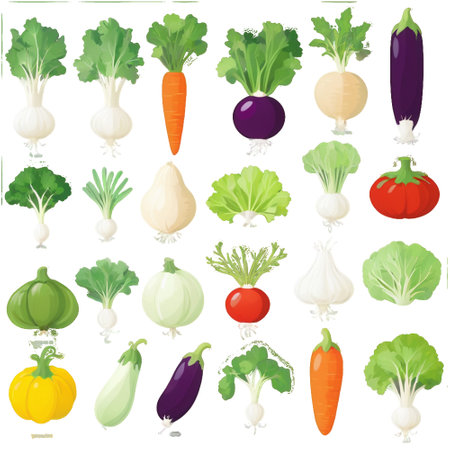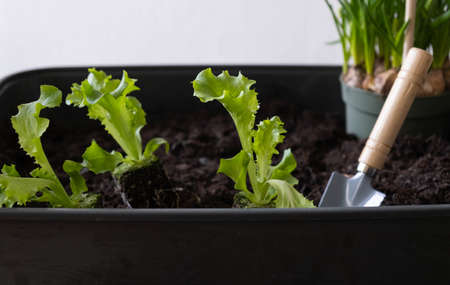1. Understanding the UK Climate Zones
Before you start planning your vegetable garden, it’s essential to understand the UK’s diverse climate zones. Britain’s weather can vary dramatically from region to region, and knowing your local conditions will help you make the most of every planting season. The UK is generally divided into a few main climate regions: the mild South West, temperate South East, cooler North, wetter West, and drier East. Each area experiences different temperatures, rainfall levels, and frost dates, all of which influence what and when you should plant.
For example, gardeners in Cornwall might be able to sow seeds a few weeks earlier than those in Scotland due to warmer springs. Conversely, those in the North or higher altitudes may face shorter growing seasons and late frosts, making timing crucial. It’s worth checking with local gardening clubs or referencing resources like the Met Office for regional advice. By tailoring your vegetable planting to your unique local weather patterns, you’ll give your crops the best possible start—and enjoy healthy harvests throughout the year.
Essential Tools and Supplies for UK Growers
If you want a thriving vegetable garden all year round, having the right tools and supplies is key. UK weather can be unpredictable, so choosing durable, sustainable items will help you stay prepared. Below is a practical checklist featuring local recommendations and eco-friendly options to support your gardening journey throughout the seasons.
Year-Round Gardening Essentials
| Tool/Supply | Why It’s Needed | UK Recommendation | Sustainable Option? |
|---|---|---|---|
| Hand Trowel & Fork | For planting, transplanting, and weeding | Burgon & Ball Stainless Steel Set | Yes – opt for FSC-certified handles |
| Sturdy Gloves | Protection from thorns and cold soil | Gold Leaf Tough Touch Gloves | Cotton or recycled materials available |
| Watering Can with Rose | Gentle watering for seedlings and young plants | Haws Heritage Watering Can | Metal cans last longer than plastic |
| Secateurs (Pruners) | Cutting back stems and harvesting crops | Darlac Expert Bypass Pruners | Repairable models reduce waste |
| Garden Hoe & Rake | Cultivating soil and removing weeds | Spear & Jackson Traditional Range | Wooden handles are biodegradable |
| Seed Trays & Pots | Starting seeds indoors in early spring/autumn | Ashortby Recycled Plastic Trays | Bamboo or coir pots as alternatives |
| Compost Bin or Heap | Makes use of kitchen/garden waste for healthy soil | Hotbin Composting System (UK-made) | Homemade compost heaps are free and green! |
Seasonal Must-Haves for Every Month
Spring:
– Cloches or fleece to protect young seedlings from late frosts
– Soil thermometer to gauge planting times accurately
– Seed labels (reusable slate or wooden types recommended)
Summer:
– Mulch (straw, bark, or homemade leaf mould) to retain moisture
– Hose with adjustable spray head for hot spells
– Netting to keep birds off berries and brassicas
– Water butt for rainwater collection (essential during hosepipe bans)
Autumn:
– Cold frame for hardening off late crops
– Wheelbarrow for moving compost, leaves, or harvests
– Leaf rake for clearing up fallen leaves (use them in your compost!)
– Bulb planter if you’re prepping overwintering onions or garlic bulbs
Winter:
– Garden fleece to cover overwintering veg
– Sturdy boots with good grip for muddy paths
– Heated propagator if starting seeds indoors early
– Insulated storage shed for protecting tools from frost damage
Sourcing Locally and Sustainably in the UK
– Visit local garden centres or independent hardware shops—many stock British-made brands.
– Check community groups for tool swaps or second-hand bargains.
– Choose peat-free compost to protect natural habitats.
– Reuse containers and seed trays wherever possible.
Your Eco-Friendly Gardening Mindset Pays Off!
The right kit keeps your gardening efficient, enjoyable, and kind to the planet. Review this checklist at the start of each month—being organised will help your vegetables thrive in every corner of the UK.

3. Month-by-Month Vegetable Planting Calendar
Having a clear plan for what to plant and when can make all the difference in a UK garden. Below, you’ll find a practical month-by-month calendar tailored for British weather and growing conditions. This guide covers sowing, planting, and harvesting times to help you make the most of each season.
January & February: Early Preparation
While much of the garden may be resting, now is the perfect time to start planning your year ahead. Indoors, you can begin sowing chillies, aubergines, and tomatoes on a sunny windowsill or heated propagator. Prepare your seed beds outdoors if the ground isn’t frozen or waterlogged.
March & April: Sowing Undercover & Outdoors
As spring approaches, sow broad beans, early peas, lettuce, and brassicas undercover or directly outside in milder areas. Potatoes can be chitted indoors and planted out from late March. Onion sets and shallots go into the ground as soon as it’s workable.
May & June: Main Planting Time
This is the busiest period for UK gardeners. Sow carrots, beetroot, parsnips, radishes, French beans, courgettes, and sweetcorn directly outdoors. Plant out hardened-off tomatoes, cucumbers, courgettes, and squash once the risk of frost has passed. Succession sow salad leaves for a continuous crop.
July & August: Keep Sowing & Start Harvesting
Continue to sow fast-growing crops such as rocket, radishes, spinach, and spring onions. Harvest early potatoes, peas, broad beans, courgettes, and salad crops regularly. Water well during dry spells and keep weeds under control to maintain healthy plants.
September & October: Late Crops & Autumn Prep
Sow overwintering onions and hardy broad beans for an early spring harvest next year. Lift maincrop potatoes and store them in a cool, dark place. Harvest pumpkins and squashes before the first frosts arrive. Clear spent plants and add compost or manure to beds in preparation for winter.
November & December: Tidy Up & Reflect
The growing season winds down—harvest any remaining leeks, parsnips, and Brussels sprouts for festive meals. Prune fruit bushes and tidy up plots. Take stock of what worked well this year and start planning improvements for next season.
4. Top Tips for British Gardeners
Gardening in the UK comes with its own set of unique challenges. From ever-changing weather to persistent pests like slugs and snails, British gardeners need practical solutions tailored to local conditions. Here are some reliable tips to help you get the most from your vegetable plot all year round.
Dealing with Unpredictable Weather
The British climate is famously fickle, but a little preparation goes a long way. Consider these suggestions:
| Challenge | Top Tip |
|---|---|
| Unexpected Frost | Keep horticultural fleece or cloches handy to protect young seedlings during sudden cold snaps. |
| Heavy Rainfall | Ensure good drainage by raising beds and adding organic matter to the soil. Mulch can also help prevent soil erosion. |
| Hot, Dry Spells | Water early in the morning or late evening to reduce evaporation and use mulch to retain moisture around roots. |
Managing Slugs and Snails
No British garden guide is complete without advice on handling these common pests. Here’s how you can keep them at bay:
- Copper Tape: Place copper tape around pots and raised beds; slugs dislike crossing it.
- Beer Traps: Sink shallow containers filled with beer into the soil – slugs are attracted and then trapped.
- Night Patrols: Head out at dusk with a torch to hand-pick slugs and snails from tender plants.
- Nematodes: Use nematode treatments (available in garden centres) as a natural biological control.
- Create Barriers: Crushed eggshells or horticultural grit scattered around plants can deter crawling pests.
Selecting Robust Varieties
Choose vegetable varieties known for their resilience in British conditions. Look for terms like “hardy”, “early cropping”, or “blight-resistant” on seed packets for best results throughout the season.
Quick Reference Table: Weather-Resistant Crops
| Vegetable | Weather Strength |
|---|---|
| Kale | Tolerates frost and wet conditions well |
| Broad Beans | Tough enough for cool, damp springs |
| Lettuce (Little Gem) | Copes with variable temperatures |
| Purple Sprouting Broccoli | Loves a chilly British winter |
| Carrots (Flyaway) | Disease-resistant and robust |
A Final Word of Encouragement
No matter the weather or wildlife, every British gardener can enjoy success with patience, preparation, and the right know-how. Embrace the quirks of the UK climate—it’s part of what makes gardening here so rewarding!
5. Sustainable Practices for UK Gardens
Embracing eco-friendly approaches is now at the heart of British gardening culture. Not only do sustainable practices help protect local wildlife and reduce your carbon footprint, but they also ensure your vegetable patch thrives throughout the year. Here’s how UK gardeners can nurture their plots responsibly and beautifully.
Composting: Turning Waste into Gold
Start by creating your own compost heap using kitchen scraps, lawn clippings, and fallen leaves. Composting reduces landfill waste and provides nutrient-rich humus to boost soil health. Many UK councils offer discounted compost bins, making this practice easy and accessible.
Water Conservation: Smart Usage Matters
Rainwater harvesting is hugely popular across the UK, thanks to our unpredictable weather. Use water butts to collect rainwater from shed or greenhouse roofs, then use it to water thirsty crops during dry spells. Mulching with organic materials like straw or leaf mould helps retain soil moisture and keeps roots cool.
Wildlife-Friendly Gardening
Encourage pollinators and beneficial insects by planting native flowers such as foxgloves, lavender, and borage around your vegetable beds. Avoid chemical pesticides; instead, opt for natural deterrents like companion planting—growing marigolds near tomatoes to repel pests is a tried-and-true British favourite.
Crop Rotation for Healthy Soil
Adopt crop rotation by changing the location of vegetable families each year. This classic method prevents nutrient depletion and reduces the risk of disease. Keep a simple garden diary to track what’s planted where—something many experienced UK gardeners swear by.
Peat-Free Solutions
The move towards peat-free composts is gathering pace in the UK due to environmental concerns. Choose peat-free alternatives when starting seeds or potting on young plants to support peatland conservation efforts.
By adopting these sustainable methods, you’ll create a productive, resilient vegetable garden that harmonises with the local environment—a true reflection of modern British gardening values.
6. Further Resources and Community Links
Staying inspired and informed throughout the year is much easier when you connect with fellow UK gardeners. Here are some trusted places to find advice, swap seeds, and join friendly gardening conversations:
UK Gardening Groups and Societies
For expert guidance and local updates, consider joining established groups like the Royal Horticultural Society (RHS) or your town’s allotment association. These communities often host seasonal workshops, talks, and open garden days—ideal for expanding your knowledge and meeting like-minded people.
Local Seed Swaps
Many towns and villages hold annual or seasonal seed swap events. Check community notice boards, local libraries, or garden centres for upcoming dates. Swapping seeds not only saves money but also helps preserve unique local varieties perfectly suited to UK climates.
Helpful Online Forums
Connect with gardeners across the country through active forums such as Grow Your Own Grapevine, the Gardeners’ World Forum, and relevant Facebook groups. These spaces are brilliant for quick troubleshooting, swapping tips, or just sharing photos of your latest harvest.
Stay Inspired All Year Round
No matter your experience level, joining a community means you’ll always have support—from sowing in spring to harvesting in autumn. Don’t hesitate to ask questions or share your successes; gardening is more rewarding when it’s shared.
Your Local Garden Centre
Pop into your nearest garden centre for regional advice and seasonal planting guides tailored to your area. Staff often know what grows best locally and can recommend new varieties to try.
With these resources at your fingertips, you’ll always have fresh ideas and encouragement on your journey as a UK gardener.


